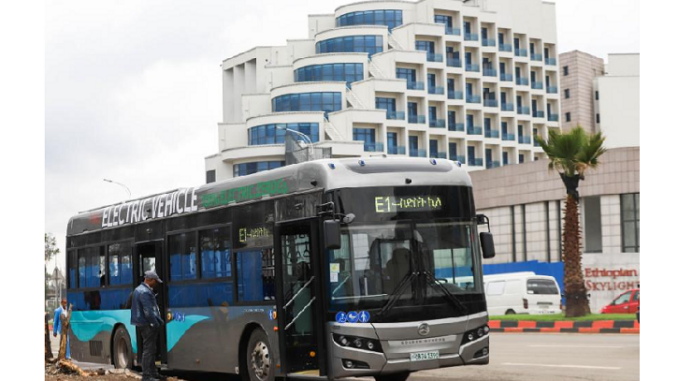
Chinese electric buses introduced to Ethiopia to advance green transport agenda
In Addis Ababa, capital of Ethiopia, the city’s mounting gridlock is creating safety and health risks, producing more greenhouse gas emissions and impeding economic development.
Ethiopia became a member of the BRICS bloc of emerging economies on January 1, 2024.
In late March 2024, the Ethiopian government launced an electric bus service as part of the countries efforts to reduce pollution and promote green transport. The introduction of EVs for public transportation in Ethiopia comes after the government announced plans to ban the importation of gasoline or diesel vehicles to expedite the transition to electric mobility.
The electric buses are assembled by a local company called Belayneh Kindie Metal Engineering Complex, using components imported from China. The Chinese company Golden Dragon supplies the components to the local company, which assembles both EV minibuses and 12-meter-long buses to meet the country’s growing demand for EVs, according to Besufekad Shewaye, general manager of the Ethiopian company.
Initially, the Ethiopian government planned to import about 148,000 electric automobiles and 48,555 electric buses as part of its 10-year strategic plan. However, the Ministry of Transport and Logistics recently announced that the initial 10-year plan was achieved within just the first two years of the implementation period from 2021 to 2030.
Thanks to the realization of the decade-long plan ahead of schedule, the ministry has revised the national 10-year strategic plan with a new target of importing 439,000 EVs within the reported period.
The Ethiopian government has allowed duty-free importation of EV components to promote the use of EVs and facilitate technology transfer in response to a global fuel price hike and climate change.
In 2023, Ethiopia spent six billion U.S. dollars on fuel imports, with over half going toward fueling vehicles, according to the Ethiopian Ministry of Transport and Logistics. Additionally, pollution levels in city centers due to these vehicles are reportedly alarming.
Addis Ababa, like many African cities, is rapidly urbanising and doubling in size every decade. Rapid economic growth has led to an increase in the rate of vehicle registration, indicative of the upsurge in the number of cars on the roads. According to CDKN Global by 2021 transport comprised 68% of the city’s total emissions. For urban residents, air pollution is one of the top causes of death, with diesel exhaust from the city’s 39,000 diesel buses and minibuses contributing to air pollutants. It is estimated that 2,700 premature deaths per year in Addis Ababa are due to exposure to poor air quality.
In 2017, the transport sector was responsible for 60% of PM2.5 non background concentration in the city. PM2.5 refers to fine inhalable particles found in the air with diameters that are 2.5 micrometers and smaller. These particles are small enough to be inhaled and are acutely dangerous because they can penetrate and lodge deep inside the lungs.
Electric vehicles are environmentally friendly as they do not produce polluting exhaust like regular internal combustion powered buses. The electric bus produces no noise pollution or carbon emissions.
With a full battery charge, the 44-seat electric bus can travel up to 370 km depending on the use of the air conditioner and the vehicle’s load. It was noted that with a full battery charge the vehicles can provide service all day.
About 30 electric buses are currently being assembled at the plant in the local company. These larger electric and other luxurious buses, equipped with WiFi, will be ready for the market in two months for various government offices and public enterprises, general manager Shewaye said.
Sources:
- Centre for China Studies, April 19, 2024. https://ccs-ng.org/chinese-electric-buses-introduced-to-ethiopia-to-advance-green-transport/
- CDKN Global, February 22, 2021. https://cdkn.org/story/electric-buses-addis-ababa